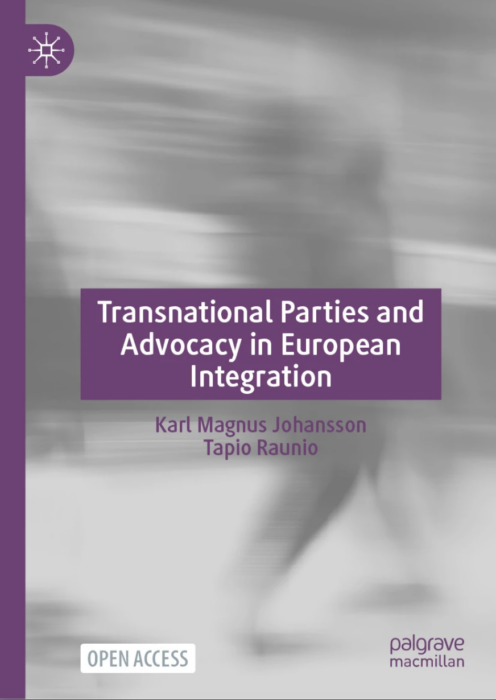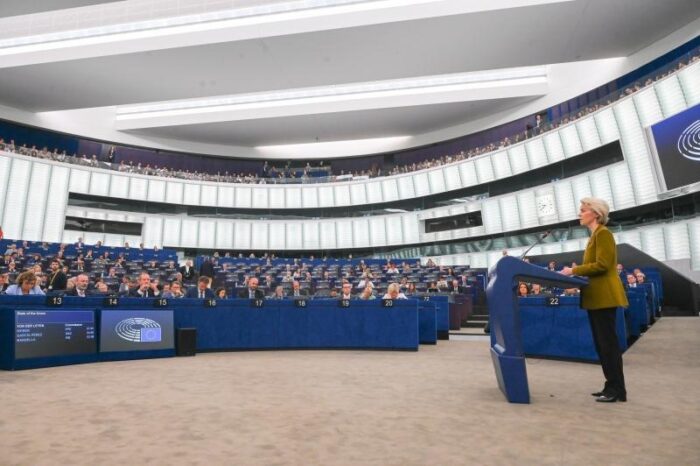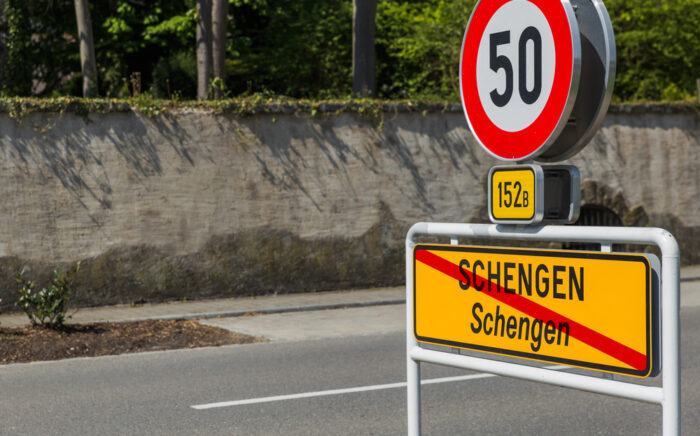Transnational Parties and Advocacy in European Integration

The untold chapters of European integration
Transnational Parties and Advocacy in European Integration
by Karl Magnus Johansson and Tapio Raunio
London: 2024
Since the beginning of the century, the somewhat tautological narrative of delivering the deliverables has framed the world of politics. Parties, especially the so-called ‘traditional’ ones, approach elections with a long and detailed list of what they claim to have been their achievements and with an even longer list enumerating the ‘as concrete as possible’ policies they pledge to strive for. They believe that showcasing determination and competence will bequeath them credibility and earn back voters’ trust. Initially, this approach was about reconnecting with citizens and restoring their confidence in politics and politicians. However, as a side effect, it has also transformed the relationship between the electorate and their representatives into a transactional one. Part of the legacy of the delivering the deliverables philosophy is therefore the idea that politics should be measurable – if not by anything else, then at least by the size of the stakeholders’ influence over the trajectory of political developments.
Meanwhile, political science has tried to keep up, and several methodologies now enable a more quantitative approach. However, they do not appear to be extensive enough, and thus fall short — especially when it comes to evaluating the politics of the European Union. The challenges therefore remain. How can you measure the power of a single stakeholder in a complex reality within which any decision requires time, multilayered compromise and consensus? How can you see the impact of a single school of political thought amidst the perpetual need to build grand coalitions? These questions inspired a monograph by two outstanding European scholars – Karl Magnus Johansson and Tapio Raunio – Transnational Parties and Advocacy in European Integration.
Their work is an important contribution to the research discipline that examines the history and exceptional character of the ‘Europarties’. Johansson and Raunio, as well as several others who examine this topic, rightfully argue that Europarties (and their historical predecessors) are key but under-analysed actors within the European Communities. That is especially true regarding the political groups in the European Parliament, other EU institutions and stakeholders actively forging the trajectory of European integration. The authors claim that this is not only an omission that tempers the real picture of how (and thanks to whom) the Union has been consolidating, but that it is also an academic gap that can be bridged. Consequently, in their monograph they propose how this gap can be bridged in a sound and proficient manner that attempts to quantify the influence of these Europarties. In other words, the authors’ ambitious aim is to complete the history of the EU with the chapters so far untold of the main heroes and heroines: the EPP (European People’s Party), the PES (Party of European Socialists) and the ALDE Party (Alliance of Liberals and Democrats for Europe Party). The choice of the three – and to exclude the European Greens – is because these three have played their parts ever since the beginning of the European Coal and Steel Community.
The book is divided into six chapters and spans 192 pages. In the first chapter, the authors define the Europarties and explain what makes them dissimilar from national political parties. The authors’ point about exceptionalism feeds into a long-running debate between scholars on evaluating the Europarties, and it supports the school that claims that the differences between the EU and any partisan system are so substantial that there is no use in applying the same methodology. In this spirit, the authors propose applying the ACF (advocacy-coalition framework) model to try and depict the Europarties’ impact. This is a pioneering approach, especially as it paves the way for the authors to point to the role of the Europarties as the agenda-setters at the EU level; as organisations in charge of the coordination of the leaders of the respective governments ahead of the Councils; and recently also as organisations extending their prerogatives for European Parliament campaigns including through opening towards innovations such as direct membership (local level activism). The authors claim that the Europarties have been the protagonists in the progressing politicisation of the EU – which, for the intragovernmental tier in which they operate, should not be seen as something that has either happened by default or that has been a transposition of the work by the political groups inside the other, federal, tier of the EU.
The subsequent chapters of Johansson and Raunio’s book examine the organisational developments of the Europarties and their perseverance in stretching the space, multiplying the resources and increasing the prerogatives with which the EU legislation has equipped them. Consequently, even if their relative power and capacity to act always depends on the sum of the stances of their member parties, the Europarties could eventually start proposing what the common projects for Europe should be – rather than only trying to amalgamate the agenda, being driven by national understandings instead. The transformative and emancipating moments came with the Single European Act, the Maastricht Treaty and 2003 regulation, which all catalysed the power of the Europarties, engaging them in intergovernmental conferences, discussions about the new treaties and the recent Conference on the Future of Europe. Regarding the latter, this is pioneering research and conclusions can be particularly instructive for those Europarties that after 2024 saw a decline in their vote share in the European Parliament, and that will have to focus on better coordination within their families to maintain the same level of influence to which they were accustomed.
Another valuable aspect of the book is the extensive list of references, which includes an impressive record of recent publications. Still, what is missing is empirical material. Johansson and Raunio state that this is difficult to obtain. However, some more interviews and references to the source documents might have been beneficial, as these could have helped in tracing at least some examples of how ideas were articulated in the Europarties’ programmatic documents and progressed to what they became at the end of the legislative processes. To illustrate the point, Johansson and Raunio credit the PES for strengthening the Amsterdam Treaty with the provisions on labour but the authors do not trace back to what the PES had initially aspired. This does not enable an assessment of how far Socialists succeeded in changing the EU while they were leading in 12 out of 15 governments. This is a question that many scholars have approached from other angles. Interviews could therefore have offered a more nuanced understanding of certain historical moments. The authors tend to credit the EPP for a pivotal role around the Treaty of Maastricht and its article on the Europarties. But the recorded exchanges with Enrique Barón Crespo, who was from the Socialist Group and who was the President of the European Parliament between 1989 and 1992 (see FEPS Talks), suggest a different interpretation of the dynamics and the negotiations among the leaders of the three parties (coincidently at that time all Belgians).
All in all, Transnational Parties and Advocacy in European Integration by Johansson and Raunio is an insightful academic monograph but also an inspiring manual for all who wish to gain a better understanding of EU-level politics. The authors are right that the Europarties are still an underestimated topic and an overlooked actor. One can therefore only hope that the readers will be eager to take up the baton and analyse some of the open questions that feature as a teaser in the conclusions. But the book is not only about the mission of unveiling the untold side of the story. It is a very up-to-date arrival and resonates with some of the processes that are currently ongoing, including the rise of the radical right in Europe, polarisation and fragmentation on the one hand, and the politicisation of the European Commission and the emergence of a new political constellation in place of the grand coalition, on the other. The authors suggest that the environment for the Europarties is changing – and those who aspire to see them persevere, thrive and lead, should see this book as providing foresight and as an inspiration for their creative and strategic thinking.





